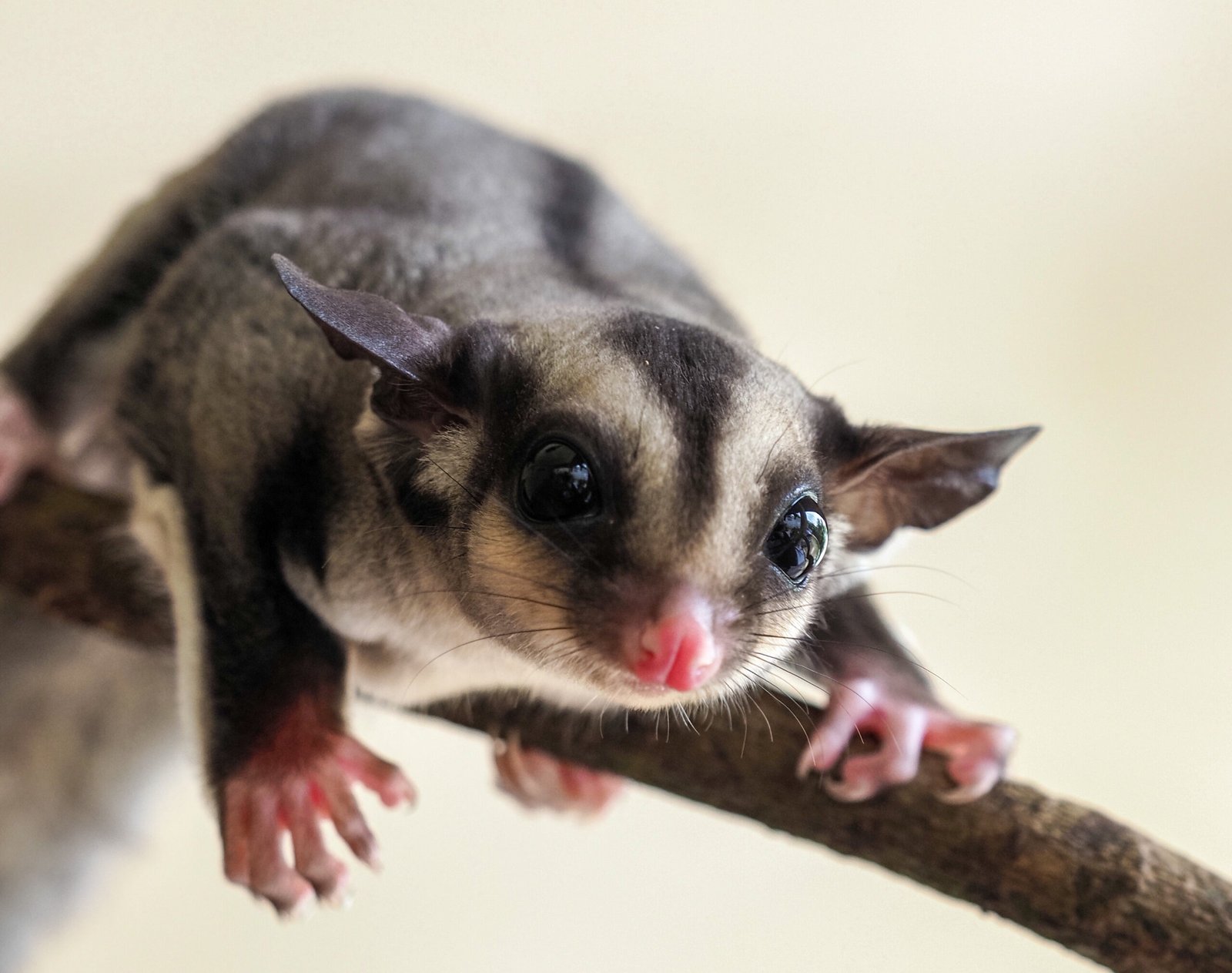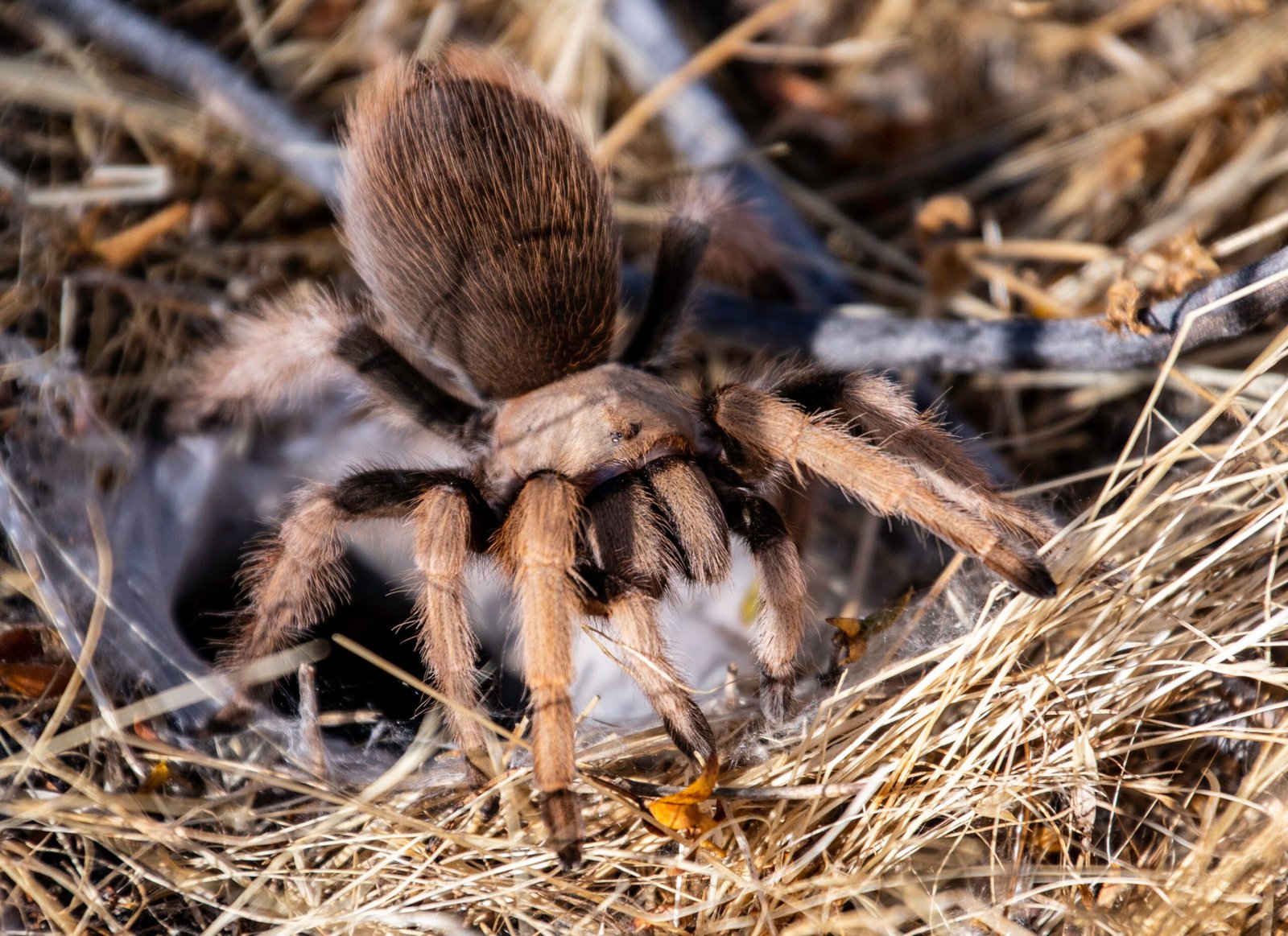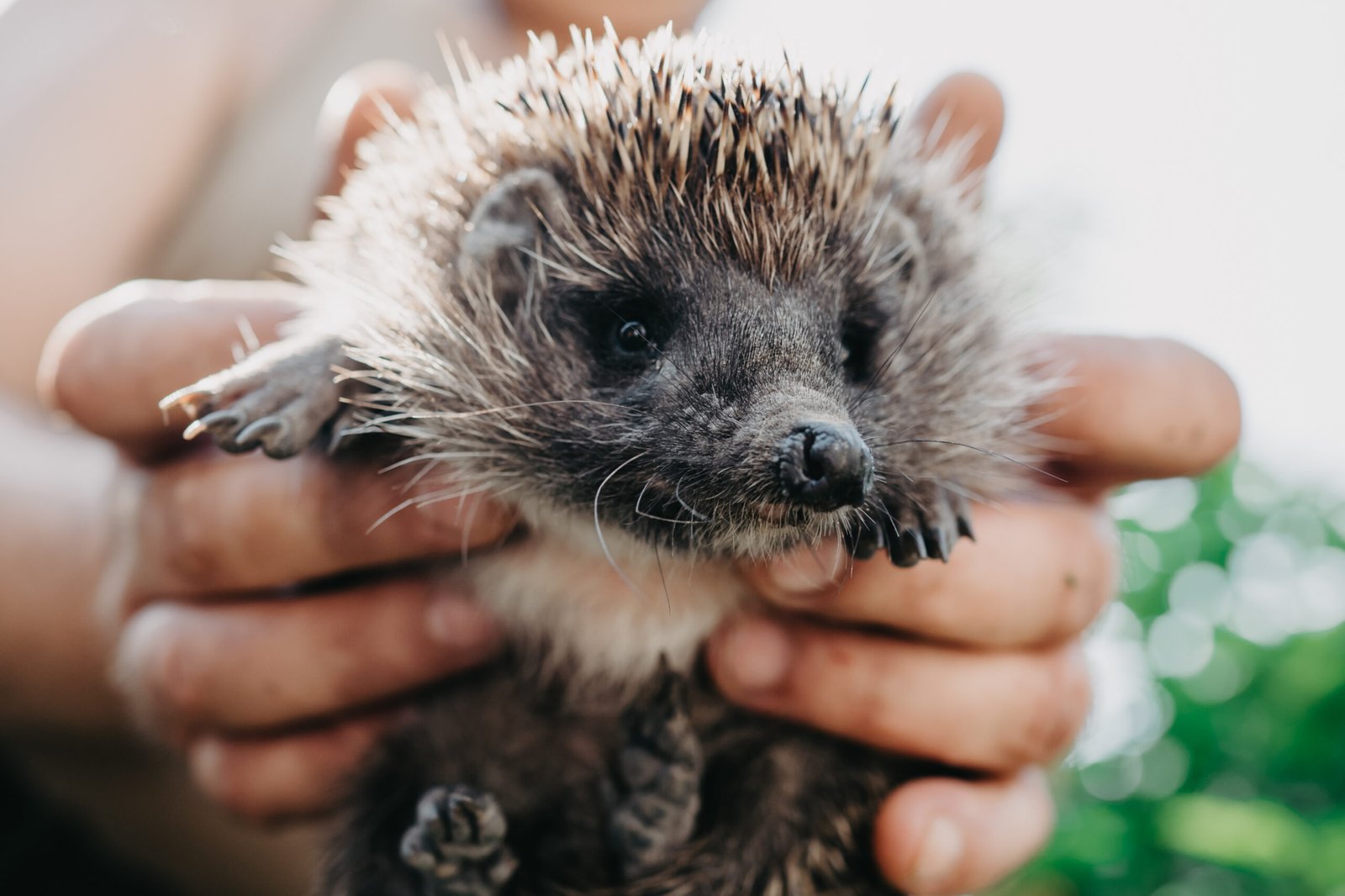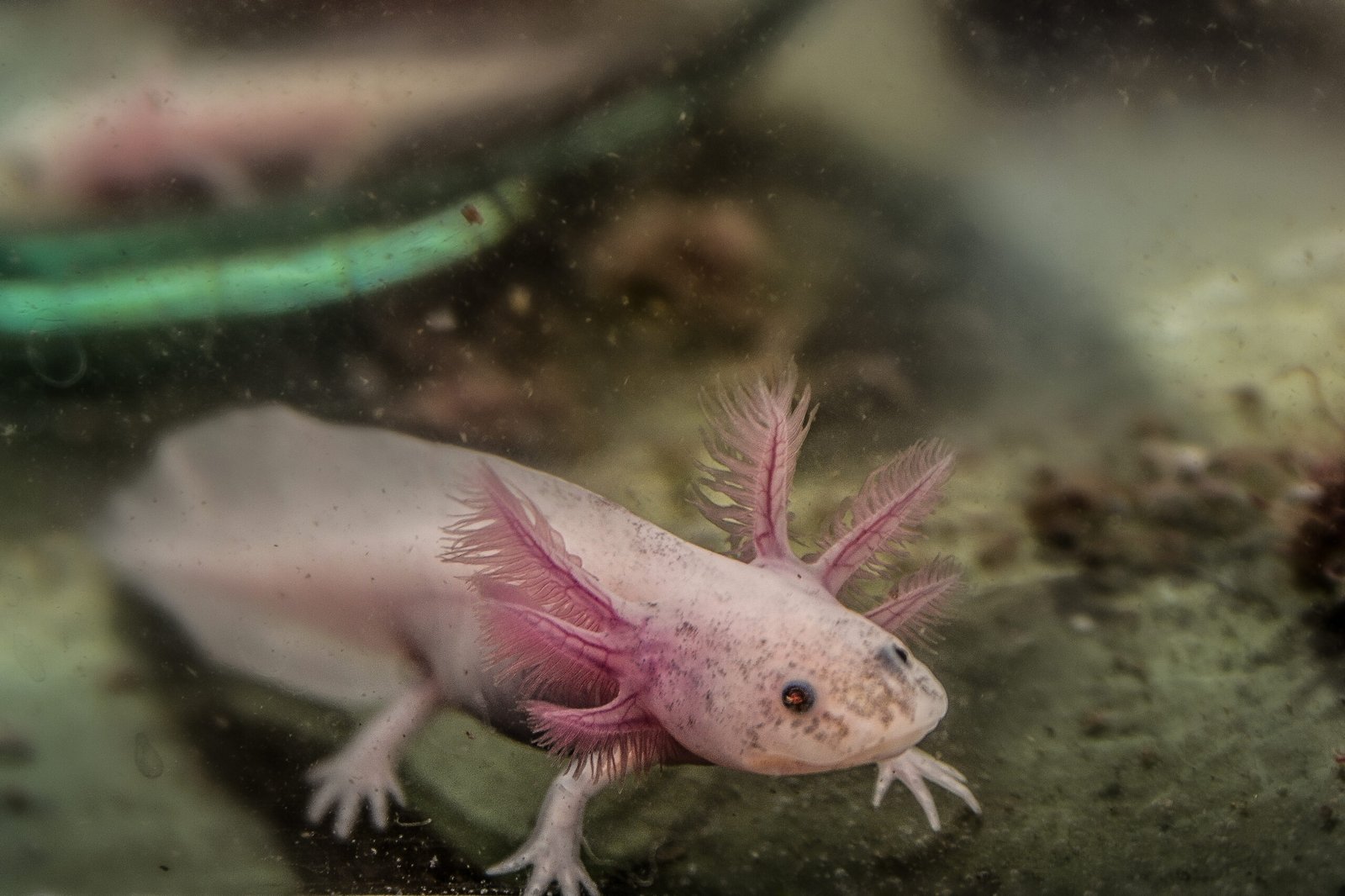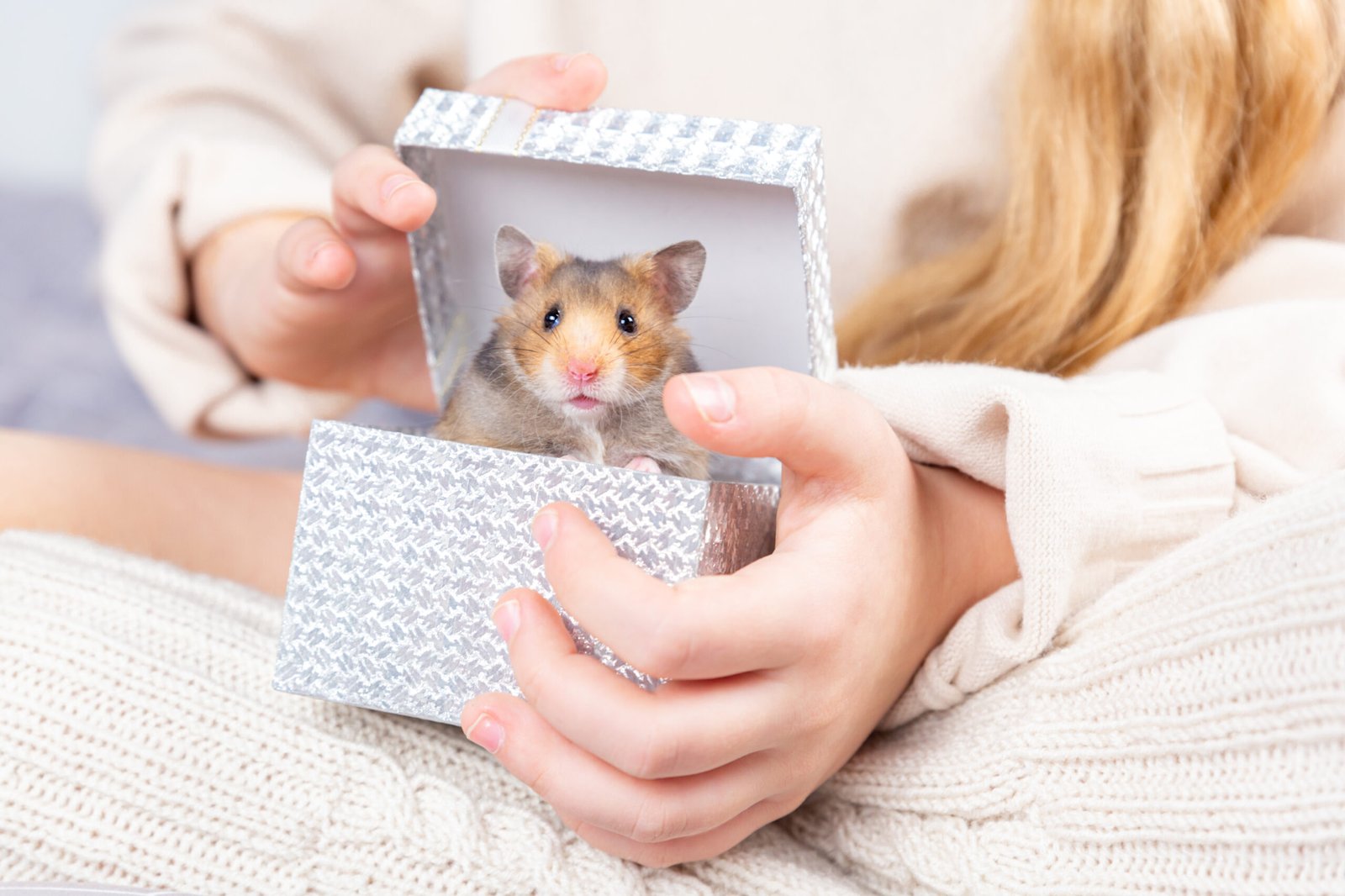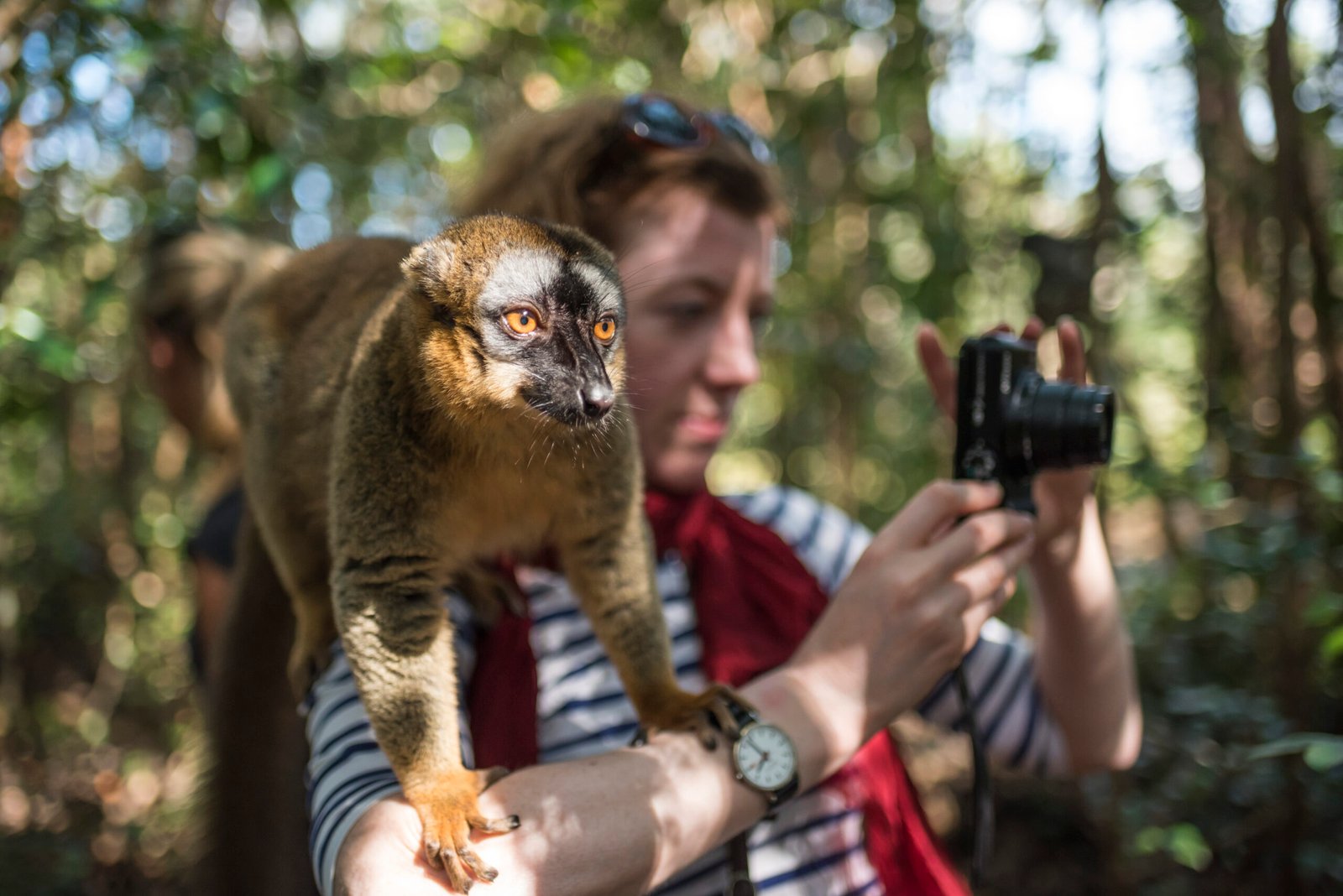Owning a sugar glider can be one of the most rewarding experiences for any pet enthusiast, but understanding their unique needs is crucial for a happy and healthy companionship. These charming, nocturnal marsupials bring a delightful spark of life into any home, yet they also demand specific care to thrive. When it comes to sugar gliders, knowledge plays a vital role in ensuring that they receive the best care possible. From providing suitable habitats to meeting their nutritional and social requirements, every detail counts in creating a perfect environment for these exotic pets. Embark on a journey to unlock the secrets that will allow you to give your sugar glider the happiest life while you enjoy the joys of this unique pet.
Beginner’s Guide to Sugar Glider Care
Sugar gliders are captivating creatures that require careful attention to their living conditions and overall well-being. These small marsupials are native to Australia and New Guinea, and as nocturnal animals, they lead active nighttime lives, mirroring their natural habitat needs. Providing a safe and expansive enclosure is essential to simulate the tree canopies they would navigate in the wild. Their enclosures should be spacious enough to accommodate their gliding behaviors and equipped with various branches and nesting pouches to replicate natural living conditions. A carefully curated environment reduces stress and encourages healthy exploration.
– Use large, multilevel cages with horizontal bars for ease of climbing.
– Include nesting pouches for sleeping and security.
– Equip the cage with climbing branches to encourage exercise.
– Ensure a safety-proof enclosure to prevent escapes.
– Incorporate dark, quiet spaces for daytime rest.
A balanced diet is equally critical, consisting of fruits, vegetables, and specialized glider pellets or insects to meet their dietary needs.
Care Needs of Sugar Gliders
| Aspect of Care | Detailed Description | Tips for Owners |
|---|---|---|
| Habitat Requirements | Sugar gliders need spacious enclosures that mimic tree canopies, allowing for climbing and gliding. Large, vertical cages with multiple levels are ideal. | – Use wire-mesh cages, ideally 24″ W x 24″ D x 36″ H or larger. – Equip with perches, branches, and nesting pouches. – Ensure bar spacing is no more than 0.5 inches to prevent escapes. |
| Diet & Nutrition | A balanced diet should include fresh fruits, vegetables, proteins, and supplements like calcium to prevent deficiencies. | – 50% fruits (apples, grapes, berries) and 50% vegetables (carrots, sweet potatoes). – Incorporate mealworms and glider pellets for protein. – Avoid high-sugar treats and processed foods. |
| Socialization Needs | Sugar gliders are social animals that need interaction with their caretakers and other gliders to prevent loneliness and stress. | – Spend daily bonding time, using bonding pouches to build trust. – Keep gliders in pairs or small groups. – Provide interactive toys to stimulate engagement. |
| Exercise & Enrichment | Enclosures should be filled with toys, branches, and ropes to encourage natural climbing and gliding behaviors. | – Offer climbing structures, exercise wheels, and ladders. – Rotate toys frequently to keep the environment stimulating. – Designate safe out-of-cage playtime. |
| Nocturnal Schedule | Being nocturnal, sugar gliders are most active in the evening and night. Align feeding and bonding sessions with these times. | – Schedule interactions for the evening. – Avoid disturbing their daytime rest. – Use dim lighting to support their activity pattern. |
| Health & Veterinary Care | Routine veterinary visits are essential, especially to monitor for diet-related issues and parasites. | – Schedule vet check-ups every 6 months. – Educate yourself on symptoms of common illnesses (e.g., lethargy, weight loss). – Maintain a relationship with an exotic pet vet. |
| Cleaning & Hygiene | A clean, sanitary environment helps prevent infections and promotes overall well-being. | – Clean the cage and bedding weekly. – Provide fresh water daily and maintain hydration. – Regularly disinfect surfaces and feeding areas. |
Their taste for sweetness isn’t just in their name; it’s a crucial part of a healthy diet that mirrors the natural foods found in their habitat.
– Provide a mix of about 50% fruits like apples, grapes, and berries.
– Vegetables such as carrots and sweet potatoes make up the other 50%.
– Incorporate insects like mealworms for protein.
– Use pellets specifically formulated for sugar gliders.
– Avoid processed foods to prevent health issues.
Social interaction is another pillar of sugar glider care. Naturally social, these animals start to exhibit loneliness and stress if isolated, making social companionship an essential feature of their care routine. Regular bonding sessions transform their behavioral dynamics profoundly.
– Spend time daily with your sugar glider for increased trust.
– Consider adopting multiple gliders for companionship.
– Introduce toys that encourage interaction with the caretaker.
– Allow supervised freedom outside the cage occasionally.
– Nurture trust with calm and gentle handling.
Regular veterinary care and the provision of enriching toys and activities cannot be overlooked. Regular health checks ensure any potential health issues are addressed promptly, while enriching environments contribute to mental stimulation and prevent boredom, crucial for their active nature.
– Schedule routine veterinary check-ups every six months.
– Offer a range of toys like wheels and hanging ropes.
– Rotate toys regularly to keep the environment stimulating.
– Encourage playtime during the evening, their most active time.
– Monitor health signs closely to ensure well-being.
Sugar Gliders
Social Creatures
Sugar gliders are incredibly social animals, reflecting their naturally communal lifestyle in the wild. In their natural habitats, they live in colonies and rely heavily on interaction with their counterparts for emotional well-being. Similarly, in captivity, sugar gliders thrive on companionship, whether it is with other gliders or through bonding with their human caregivers. Failing to provide adequate social interaction can lead to loneliness, stress, and behavioral issues. A supportive and interactive environment can foster a bond that benefits both the glider and the owner.
– Keep sugar gliders in pairs or small groups.
– Dedicate time daily for interactive play.
– Introduce auditory toys that mimic other sugar gliders.
– Provide diversified activity spaces to encourage exploration.
– Allow face-to-face interaction with trusted humans.
Dietary Requirements
Nutrition forms the foundation of a sugar glider’s health, influencing longevity and quality of life. Their diet should encompass a balance of fruits, vegetables, and rich protein sources like mealworms or specially formulated pellets. This dietary approach mimics their natural foraging habits and provides all necessary nutrients. Varied and balanced meals are key to preventing nutritional deficiencies, while hydration remains equally important.
– Supply a mix of different fruits, altering them to prevent boredom.
– Ensure vegetables form part of each meal, focusing on leafy greens.
– Incorporate non-toxic insects as an essential protein source.
– Maintain a constant supply of fresh water.
– Avoid sugary treats to maintain optimal health.
Nocturnal Habits
Understanding the nocturnal instincts of sugar gliders informs their care and daily management. As creatures of the night, they showcase heightened activity during dusk and dawn, aligning their schedules with the dark. Respecting this schedule aids in creating a harmonious environment that complements their instincts. Planning interaction and feeding around their active periods enhances care management.
– Initiate bonding activities during evening hours.
– Avoid disturbing their daytime rest.
– Adjust feeding times to their natural activity schedule.
– Keep ambient noise low during their rest periods.
– Provide subdued lighting in the evening to stimulate their activity.
Space and Enrichment
Enrichment combats monotony and supports the psychological and physical health of sugar gliders, mirroring the challenges they would face in the wild. Adequate space and exciting toys keep them engaged and stimulated, essential for well-being. A dynamic environment encourages them to glide, climb, and explore, fulfilling their inherent needs.
– Install ropes, wheels, and ladders in the enclosure.
– Rotate and introduce new toys regularly.
– Ensure climbing opportunities are plentiful.
– Design the environment to mimic a variety of textures and heights.
– Provide mental puzzles and foraging challenges.
Sensitive Health Needs
The health needs of sugar gliders take precedence in their care, necessitating regular veterinary consultations that keep potential health issues at bay. Given their exotic nature, they require specialized knowledge from veterinarians. Owners should stay vigilant for behavioral and dietary changes, acting swiftly to manage any health concerns.
– Schedule health checks every six months.
– Stay current with vaccinations under veterinarian advice.
– Educate yourself on common symptoms of illness.
– Develop a relationship with a veterinarian experienced in exotics.
– Prioritize a diet tailored to sugar gliders for best health outcomes.
How to Care for Your Pet Sugar Glider
Caring for a sugar glider involves a layered approach that encompasses dietary, environmental, and social considerations. These fascinating nocturnal creatures require a structured and calculated care plan that can adapt to their unique needs. Beginning with the diet, which is a mix of fresh fruits and vegetables complemented by specialized glider pellets, acquiring the right balance ensures their nutrition needs are met. This diverse diet prevents nutritional deficiencies and supports overall health. Furthermore, offering a spacious and engaging living environment allows sugar gliders to thrive, as they have plenty of room to climb and explore.
– Opt for vertical cages with varied textures for climbing.
– Include fun toys for mental stimulation.
– Engage in regular social sessions.
– Incorporate fresh fruits, vegetables, and proteins in their diet.
– Consistently monitor for health changes with a vet’s insight.
Socialization is equally pivotal as these creatures crave interaction to flourish, both with other gliders and human caretakers. Establishing a daily routine of interaction strengthens your bond, assuring their emotional well-being. Regular veterinary check-ups are another critical element, helping to preemptively address health concerns. Lastly, creating a stable environment fosters security, allowing your sugar glider to feel safe, secure, and content, contributing towards an enriching and mutually rewarding companionship.
– Dedicate time for daily interaction and bonding.
– House sugar gliders in pairs or groups for natural social behavior.
– Manage playtime during nocturnal active hours.
– Secure expert advice from an exotics veterinarian.
– Monitor and maintain ideal environmental conditions.
Sugar Glider Diet and Nutrition
The role of diet in maintaining a sugar glider’s health is paramount. A proper dietary regime not only promotes wellness but directly impacts their life quality. Sugar gliders benefit from a diverse diet, consisting of fresh fruits, vegetables, proteins, and supplemental vitamins. This regimen reflects their calorie and nutritional needs and helps mimic their natural foraging behaviors. Fresh or frozen fruits, including apples, grapes, and melons, should make up a significant part of their nutritional plan. Complement these with leafy greens and a variety of protein sources to fulfill their needs.
– Offer a fruit variety, incorporating apples, grapes, and melons.
– Ensure regular portions of leafy greens like spinach and lettuce.
– Provide protein through mealworms and cooked eggs.
– Supplement with sugar glider-specific pellet formulations.
– Keep hydration levels optimal with constant fresh water availability.
Avoid feeding foods high in sugar or harmful substances, as these can severely impact their health. Variety is key, encouraging comprehensive nutrition that supports vitality. A well-balanced diet contributes to longevity and liveliness, emphasizing the importance of getting their nutrition right for optimal health outcomes.
– Steer clear of toxic foods such as chocolate and caffeine.
– Rotate food items to keep diet varied and interesting.
– Incorporate special treats sparingly.
– Consult a vet for dietary adjustments as needed.
– Watch for any adverse reactions to new foods.
Sugar Glider Behavior
Understanding the behavioral tendencies of sugar gliders facilitates better care and a healthier relationship between pet and owner. These marsupials, being nocturnal, are most active during night hours, requiring care routines to reflect this natural pattern. Their behaviors are richly social, with strong bonds formed through grooming, vocalizations, and mutual companionship, reinforcing the need for social structures. They communicate with humans and each other using a range of sounds and social grooming techniques, fostering a deep connection.
– Acknowledge their nocturnal nature in your routine.
– Introduce games that encourage natural nighttime activity.
– Encourage bonding through mutual grooming and petting.
– Recognize and respond to vocal communication effectively.
– Keep environmental acclimatization in mind.
In nature, their behaviors include activities such as gliding and exploratory play, reflecting their preference for spacious environments that allow freedom of movement. A varied diet mimicking their natural intake, rich in fruits, vegetables, and proteins, supports these behaviors, maintains health, and invigorates them mentally and physically.
– Use gliding toys and branches for exercise.
– Provide spaces inside and outside the cage for exploration.
– Balance diet with fresh fruits, vegetables, and varied proteins.
– Respect their social instincts with group housing.
– Stimulate interest with puzzles and cognitive challenges.
Medical Care for Your Pet Sugar Glider
Medical care presents an invaluable dimension of comprehensive sugar glider care. Frequent veterinary check-ups act as proactive measures toward maintaining your pet’s health and diagnosing potential issues early. An exotics-trained vet can guide you through the intricacies of sugar glider-specific concerns, ensuring they receive tailored care. Keeping vaccinations up-to-date can prevent certain diseases and enhance their immune defenses. A balanced and nutrient-rich diet also plays a significant role in supporting their longevity.
– Schedule veterinary health checks twice annually.
– Keep vaccinations consistent with vet recommendations.
– Customize diet plans with a vet’s input for sustained health.
– Monitor eating and behavioral changes vigilantly.
– Cultivate a relationship with an experienced exotic pet vet.
Being alert to signs of illness such as changes in eating habits or behavior allows for quick intervention and treatment. Building a rapport with a veterinarian who specializes in exotic pets can ensure that your sugar glider receives expert attention and enjoys a healthy and robust life.
– Keep track of weight changes regularly.
– Respond to any lethargy or unusual behavior promptly.
– Implement regular dental hygiene practices.
– Protect them against parasites with preventive measures.
– Ensure hygiene in and around living spaces consistently.
Boarding for Your Pet Sugar Glider
When travel arises, boarding facilities may offer a temporary home for your sugar glider. Selecting the right facility that understands and provides care for gliders’ unique needs is imperative. Verifying that the boarding accommodation includes suitable enclosures that mimic their natural settings in terms of space and climbing opportunities ensures comfort and safety. Confirm that their diet during the stay adheres to your pet’s familiar routine of fresh fruits, vegetables, and specialized glider food. This continuity aids in stress reduction.
– Choose facilities with proven experience in sugar glider care.
– Verify suitable cage features aligned with their habitat.
– Check for adherence to a familiar dietary plan.
– Ensure opportunities for social interaction and play.
– Discuss health monitoring protocols with facility managers.
An inquiry about the social interaction your sugar glider will receive during the stay is crucial to mitigate stress and ensure a smooth boarding experience. Effective health monitoring practices must also be a part of their stay to address any signs of stress or illness timely and efficiently.
– Confirm employee expertise in sugar glider handling.
– Align caregiver duties with your sugar glider’s social needs.
– Evaluate the facility environment for noise and stress factors.
– Conduct a pre-boarding visit to ensure kindness and expertise.
– Discuss emergency and health procedures thoroughly.
More Small Mammal Care Tips
Expanding your knowledge on the holistic requirements of sugar gliders can significantly enhance their living conditions and your experience as an owner. Providing a spacious, vertically oriented enclosure satisfies their climbing instincts and natural activity patterns. A balanced diet tailored to the glider’s needs, rich in fruits, vegetables, proteins, and specially formulated supplements, underpins their overall health. Stimulating environments, incorporating toys, tunnels, and branches, promote physical activity and mental engagement, ensuring an electrifying abode.
– Opt for space-efficient, vertically oriented cages.
– Introduce toys that encourage agility and thought processes.
– Reflect dietary plans on their natural eating habits.
– Stay informed with current care techniques and innovations.
– Foster bond-building strategies with regular interaction.
Maintaining a consistent schedule for socialization and regular veterinary assessments culminates in optimal physical health and emotional satisfaction. Active monitoring for any signs of stress or illness opens windows for timely treatments or interventions, steering toward a vital and fulfilled life.
– Establish regular timetable for social engagement.
– Document health check-ups to keep track of wellness progress.
– Stay abreast of indications of physical or psychological distress.
– Embed preventive health care into daily routines.
– Invest time in research to remain knowledgeable about care advancements.
What are the basic needs of sugar gliders for a healthy lifestyle?
Sugar gliders, those enchanting creatures with their wide-eyed stare and gliding prowess, have captivated the hearts of exotic pet enthusiasts around the world. To ensure these marsupials lead a happy and healthy life, it’s crucial to cater to their unique needs. Here’s a comprehensive understanding of their fundamental requirements:
1. Appropriate Diet
A well-rounded diet is paramount for maintaining the health and vitality of sugar gliders. In the wild, their diet consists of nectar, fruit, insects, and tree sap. To replicate this in captivity, a balanced diet should include:
– Fruits and Vegetables: Fresh fruits such as apples, berries, and melons along with vegetables like sweet potatoes and carrots should form a substantial part of their diet.
– Protein Sources: Incorporate insects like mealworms and specialized pelleted food formulated for sugar gliders to ensure they receive adequate protein.
– Calcium Supplementation: Calcium is critical to prevent metabolic bone disease; therefore, ensuring they receive calcium-enriched foods is essential.
It’s vital to have a nutritious balance, as imbalances can lead to obesity or malnutrition-related issues.
2. Social Interaction
Sugar gliders are inherently social animals and thrive on interaction with their owners and other sugar gliders. They are nocturnal by nature, meaning most of their activity occurs late in the day and at night. Therefore:
– Bonding Time: Engage your sugar glider in play and socialization daily to strengthen bonds and keep their spirits high.
– Companionship: If possible, consider owning more than one sugar glider to allay loneliness, as they can become depressed or develop behavior issues without constant companionship.
3. Spacious Habitat
The natural desire of sugar gliders to glide and explore requires an enclosure that meets their active needs:
– Enclosure Size: A tall cage, instead of a wide one, echoes their arboreal habitat, enabling gliding and climbing.
– Enrichment: Equip their habitat with plenty of branches, ropes, and safe toys to stimulate mental and physical activity. Nesting pouches are also necessary for their comfort and security.
Safety of their habitat should not be overlooked; ensure bar spacing is small enough to prevent escapes or injuries.
4. Health and Veterinary Care
A healthy lifestyle cannot ignore regular health check-ups to catch early signs of illness:
– Routine Veterinary Visits: Regular examinations from a veterinarian who specializes in exotic pets ensure that your sugar glider remains in optimal health.
– Vaccinations and Diet Checks: Stay updated on any necessary vaccinations and dietary needs that might change over time.
How should I set up a suitable living environment for a sugar glider?
Creating a nurturing and safe environment for your sugar glider is paramount to ensuring its health and happiness. These adorable marsupials, native to Australia and Indonesia, have specific needs that must be met to thrive in a captive environment. Here’s a detailed guide on how to set up a suitable living environment for your sugar glider:
1. Cage Requirements
Sugar gliders are active creatures and require a spacious cage to accommodate their need for exercise and exploration. Choose a tall, wire-mesh cage to allow for vertical climbing space. The cage should ideally measure at least 24 inches long, 24 inches wide, and 36 inches high, but bigger is always better.
– Bar Spacing: Ensure the bar spacing is no more than half an inch to prevent escape or injury.
– Material: Avoid galvanized wire that could lead to zinc poisoning; powder-coated metal or stainless steel is preferred.
2. Cage Placement
The location of the cage is just as important as its setup. Aim for an area that is away from direct sunlight, drafts, and loud noises, as sugar gliders are sensitive to extremes in temperature and stressors.
– Temperature: Maintain a consistent temperature between 70°F to 90°F. Avoid rapid temperature changes which can cause stress or illness.
– Lighting: Mimic natural light cycles to regulate your sugar glider’s sleeping patterns. Avoid bright lights during their active nighttime hours.
3. Enrichment and Accessories
To simulate their natural habitat and provide mental stimulation, enrich the cage with various accessories:
– Branches and Perches: Offer different types of branches for climbing and perching, vital for their exercise and foot health.
– Nesting Pouches: Provide soft, fleece nesting pouches at various levels for sleeping and hiding. Sugar gliders are communal and often cozy up together, so ensure these pouches are spacious and soft.
– Toys: Include a variety of toys, such as swings, ropes, glider-safe wheels (without bar gaps), and foraging items to keep them engaged.
4. Diet Considerations
Feeding goes hand-in-hand with creating a suitable environment. Sugar gliders require a diet rich in nutrients to support their active lifestyle.
– Staple Nutrients: Provide a balanced diet consisting of protein (lean meats, eggs), fruits, and vegetables. A calcium-rich and phosphorus-balanced commercial diet is often recommended.
– Hydration: Fresh water must be available at all times. Use a sipper bottle or shallow dish that is changed daily to ensure cleanliness.
What kind of diet should I provide to ensure my sugar glider gets proper nutrition?
Sugar gliders, those adorable marsupials with gliding capabilities, require a balanced diet to thrive in a domestic setting. Their dietary needs are unique due to their natural habits and physiological requirements. Here’s a comprehensive guide to ensuring your sugar glider gets the nutrition it needs to stay healthy and active.
Understanding Sugar Glider Diet Basics
Sugar gliders are omnivorous creatures, meaning they consume both plant and animal matter. In the wild, their diet consists of a variety of foods including nectar, fruit, insects, and even small vertebrates. Replicating this diet in captivity is key to maintaining their health. Here’s how you can provide a well-balanced diet:
1. Protein Sources:
– Insects: Live or dried mealworms and crickets are excellent sources of protein. They mimic the insects sugar gliders would naturally hunt in the wild.
– Lean Meat: Occasionally offering boiled chicken or scrambled eggs can supplement their protein intake. Be sure to avoid any seasoning or oils.
2. Fruits and Vegetables:
– Fruits: Providing fresh fruits such as apples, bananas, grapes, and berries is essential. Opt for a blend of sweet and less sweet varieties to mimic natural foraging.
– Vegetables: Small quantities of carrots, sweet potatoes, and greens can be given. Ensure they are well-washed and chopped into small, manageable pieces.
3. Nectar Substitutes:
– Specially formulated nectar supplements are available which replicate the nutritional content of natural flower nectar that sugar gliders consume in the wild. These can be a pivotal part of their diet.
4. Calcium and Mineral Needs:
– Sugar gliders are prone to calcium deficiencies, which can lead to health issues such as hind leg paralysis and dental problems. Therefore, calcium supplements may be necessary. Always consult with a veterinarian to determine the correct dosage and form.
– Cuttlebones, often used for birds, can also be provided and serve as a natural mineral block.
5. Commercial Sugar Glider Pellets:
– Reputable brands with pellets specifically formulated for sugar gliders can serve as a convenient and balanced nutritional option. These should never be the sole component of the diet but can complement the fresh food offered.
Feeding Tips and Considerations
– Portion Control: Sugar gliders have small stomachs and thus should be fed in small portions several times a day. Overfeeding can lead to obesity, while underfeeding can result in malnutrition.
– Hydration: Fresh water should always be available to ensure they stay hydrated, especially since fruits may not always meet all their water needs.
– Variety: To prevent boredom and ensure a wide range of nutrients, regularly rotate the types of fruits and insects offered.
How can I help my sugar glider socialize and engage in natural behaviors?
Sugar gliders are fascinating creatures with unique social needs and natural behaviors. As a sugar glider owner, it’s essential to provide them with a stimulating environment that caters to their instincts and promotes their well-being. Here are some detailed tips and methods to help your sugar glider socialize and engage in their natural behaviors:
Understanding Sugar Glider Social Structure
Sugar gliders are naturally social animals that thrive in groups, known as colonies, in the wild. To mimic this environment, consider adopting at least two sugar gliders if possible. Single sugar gliders can live fulfilling lives but require more human interaction to meet their social needs. Observe their behavior to understand their social cues and preferences, ensuring each glider has opportunities to bond with you and/or their companions.
Bonding with Your Sugar Glider
Building a strong bond with your sugar glider requires patience and time. Spend consistent time each day handling and interacting with them. Use a bonding pouch to keep them close to you during the day, allowing them to become familiar with your scent and voice. Offering treats like small amounts of unsweetened yogurt or fresh fruit can also create positive associations and encourage a friendly relationship.
Creating an Enriched Environment
Provide an enriching environment that stimulates their curiosity and encourages natural behaviors. This includes:
– Cage Setup: A large, multi-level cage offers ample space for climbing and gliding. Include branches, ropes, and glider-safe plants to replicate a natural habitat and allow for physical activities.
– Toys and Activities: Include an assortment of toys like wheels, tunnels, and foraging toys that challenge them mentally and physically. Rotate toys regularly to prevent boredom and encourage exploration.
– Glider-Safe Space: Designate a safe room or play area outside of their cage for them to explore under supervision. Ensure the space is free of hazards and contains stimulating items like climbing nets or pouches.
Encouraging Natural Foraging Behaviors
In the wild, sugar gliders spend a significant amount of time foraging for food. Simulate this behavior by providing a diet that involves elements of foraging:
– Food Puzzles: Use tools like food vehicles or hide small treats within toys that require them to work to access the food.
– Varied Diet: Offer a variety of fruits, vegetables, proteins, and specially formulated glider pellets to ensure nutritional balance and stimulate their foraging instincts.
Providing Consistent Interaction and Socialization
Regular interaction is essential for a well-socialized sugar glider. Set aside daily time for play, out-of-cage interaction, and socialization:
– Interactive Play: Engage in activities that encourage gliding and climbing, such as using a feather toy to simulate natural prey.
– Recognize Preferences: Pay attention to individual personalities and preferences, adjusting your approach to suit each glider’s comfort level.
What are common health issues in sugar gliders and how can I prevent them?
Sugar gliders, those adorable and small marsupials with a penchant for gliding from branch to branch, are wonderful pets but require specific care to maintain their health. Various common health issues can occur in these creatures, and being informed is the first step to ensuring their well-being. Here, we delve into some prevalent health concerns and provide guidance on how to effectively prevent them.
1. Nutritional Deficiencies
Sugar gliders are prone to nutritional imbalances, primarily due to an incorrect diet. In the wild, they consume a varied diet, including fruits, vegetables, insects, and sap, which can be challenging to replicate in captivity. A lack of calcium and an excess of phosphorus can lead to metabolic bone disease, a serious condition that causes weakening of the bones and can result in fractures.
Prevention:
– Balanced Diet: Provide a diet that mimics their natural intake as closely as possible. It should include a mix of fresh fruits, vegetables, and sources of protein like insects or specially formulated sugar glider pellets.
– Calcium Supplements: To address calcium deficiencies, supplements can be added under the guidance of a veterinarian.
– Avoid Phosphorus-rich Foods: Minimize foods high in phosphorus, such as meats and nuts, which can disrupt the calcium-phosphorus balance.
2. Obesity
Due to their love for sugary and fatty foods, sugar gliders can quickly become overweight if their diet is not carefully monitored. Obesity can lead to a whole host of other health problems, including heart disease and liver issues.
Prevention:
– Portion Control: Measure their food portions to avoid overfeeding. Remember that sugar gliders have small stomachs and do not require large amounts of food.
– Healthy Treats: Limit treats high in fat and sugar, such as commercial sugar glider snacks or human food like sweets and chocolate.
– Exercise: Ensure that your sugar glider has ample opportunity for exercise. A large cage with plenty of room to climb and glide, as well as supervised out-of-cage time, is essential.
3. Parasites and Infections
Sugar gliders can be susceptible to external parasites like mites and internal parasites such as worms. They may also be prone to bacterial and fungal infections if their environment is not kept clean.
Prevention:
– Regular Vet Check-ups: Schedule regular check-ups with a veterinarian experienced in exotic pets to catch any signs of infection or parasitic infestation early.
– Hygienic Living Conditions: Maintain a clean habitat by regularly cleaning their cage and changing the bedding to prevent the growth of harmful bacteria and fungi.
In conclusion, understanding the needs of sugar gliders is paramount for anyone considering these delightful creatures as companions. By focusing on their unique dietary requirements, ensuring they have ample space for movement, and creating a stimulating environment that mirrors their natural habitat, you can significantly enhance their well-being and longevity. Additionally, social interaction is crucial; these social creatures thrive on companionship, whether from their human caregivers or fellow gliders. By comprehensively addressing these needs, you not only foster a healthier environment for your sugar glider but also cultivate a rewarding and enriching relationship. Embracing the responsibilities of sugar glider care leads to happier, healthier pets and offers a fulfilling experience for the owner, making the journey together a harmonious one.
